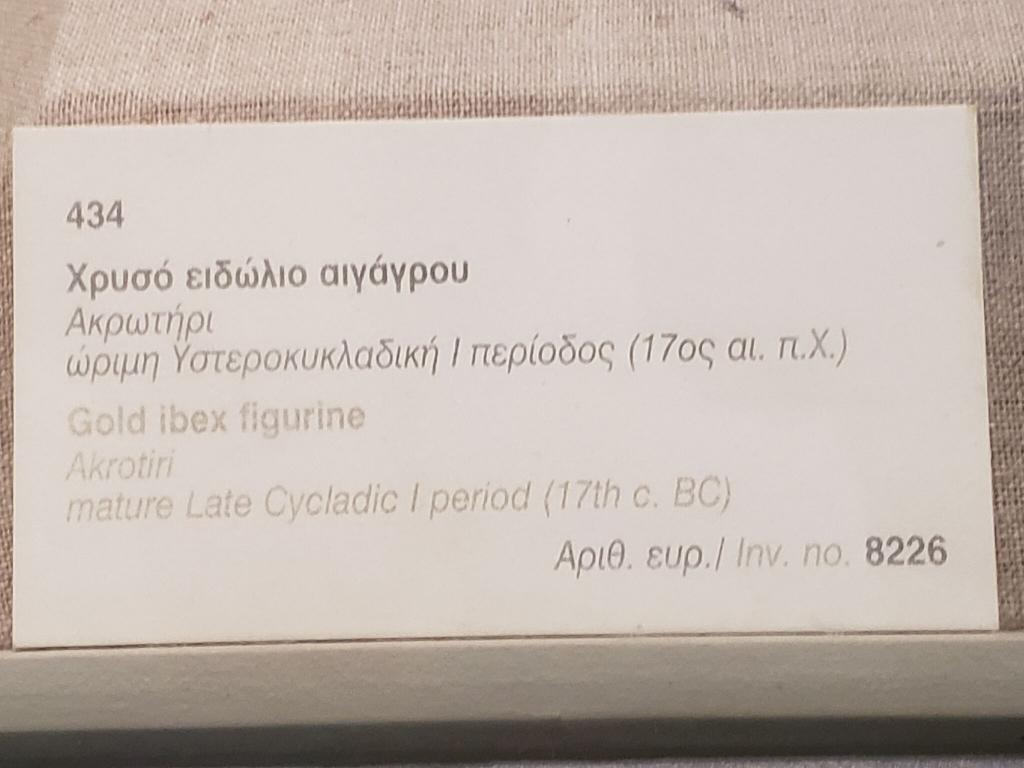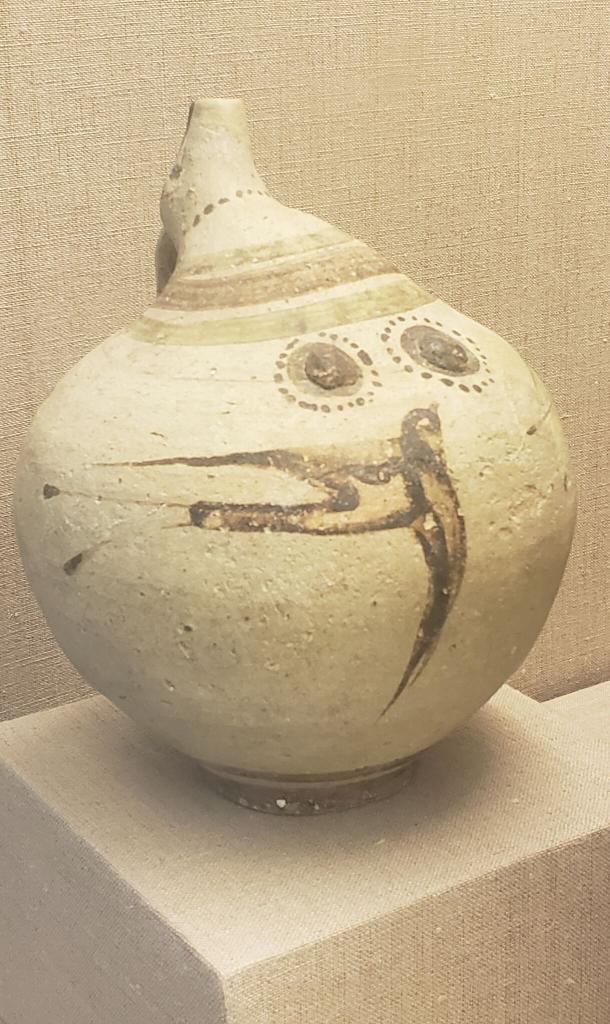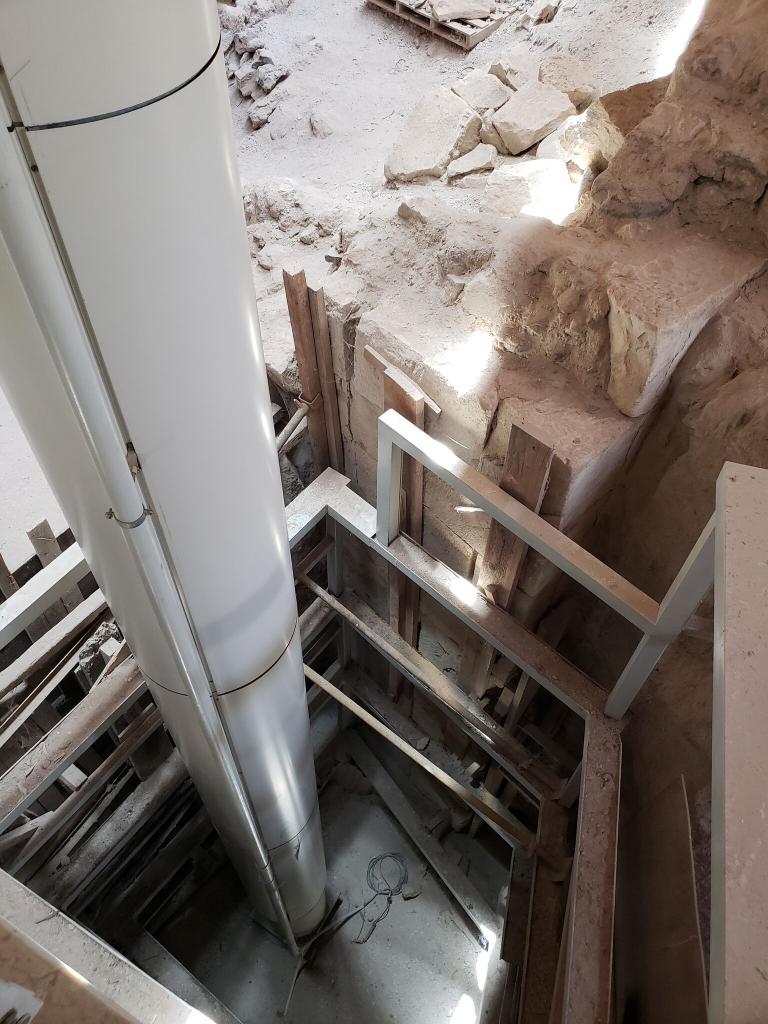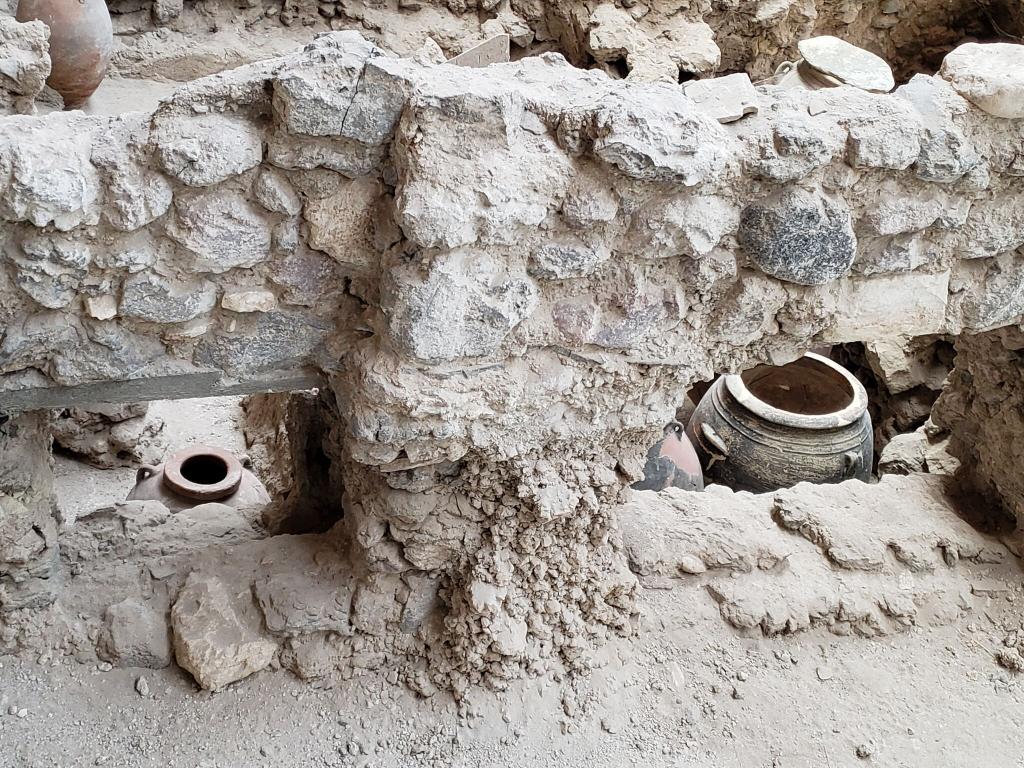

 Santorini is perhaps the most famous and popular of all the Greek Cyclades Islands. What most people do not know is: 1) its actually five islands if one includes the active volcano crater; 2) it is basically a desert island (almost no rainfall at all), 3) it’s very mountainous and not easy to get around in. It is also the locale of one of the most ancient cities in that part of the world— Akrotiri dating at least to 1700 B.C. if not older, and now a well-preserved archaeological site in a climate controlled building (thanks again to the Europeans). How then does one grow anything on a volcanic island that has no real rain— answer, the volcanic pumice rock absorbs sea air moisture, allowing Boutari and other winemaking groups to grow grape vines on the island. Problem— its so bloody windy on this island, they have to curl them up on the ground, rather than hanging them on wires where they would be blown to bits. Here’s a wall showing the basic rocks of the island— black basalt, white pumice, and iron– all thanks to the volcano….
Santorini is perhaps the most famous and popular of all the Greek Cyclades Islands. What most people do not know is: 1) its actually five islands if one includes the active volcano crater; 2) it is basically a desert island (almost no rainfall at all), 3) it’s very mountainous and not easy to get around in. It is also the locale of one of the most ancient cities in that part of the world— Akrotiri dating at least to 1700 B.C. if not older, and now a well-preserved archaeological site in a climate controlled building (thanks again to the Europeans). How then does one grow anything on a volcanic island that has no real rain— answer, the volcanic pumice rock absorbs sea air moisture, allowing Boutari and other winemaking groups to grow grape vines on the island. Problem— its so bloody windy on this island, they have to curl them up on the ground, rather than hanging them on wires where they would be blown to bits. Here’s a wall showing the basic rocks of the island— black basalt, white pumice, and iron– all thanks to the volcano….
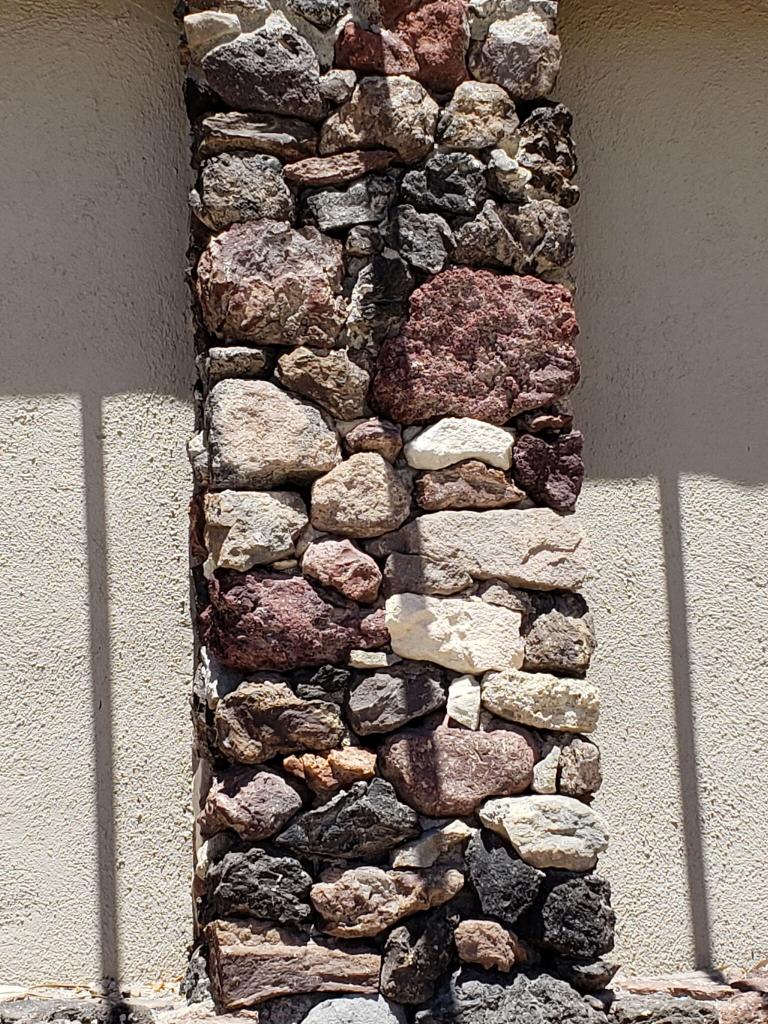 There is much to show and tell about Akrotiri, so this post and the next will be devoted to it. First of all, the people who originally lived on Santorini almost 2,000 B.C. ago seem to have come from Minoan civilization on Crete, or possibly from Cyprus on ships like this one our guide is showing us….
There is much to show and tell about Akrotiri, so this post and the next will be devoted to it. First of all, the people who originally lived on Santorini almost 2,000 B.C. ago seem to have come from Minoan civilization on Crete, or possibly from Cyprus on ships like this one our guide is showing us….
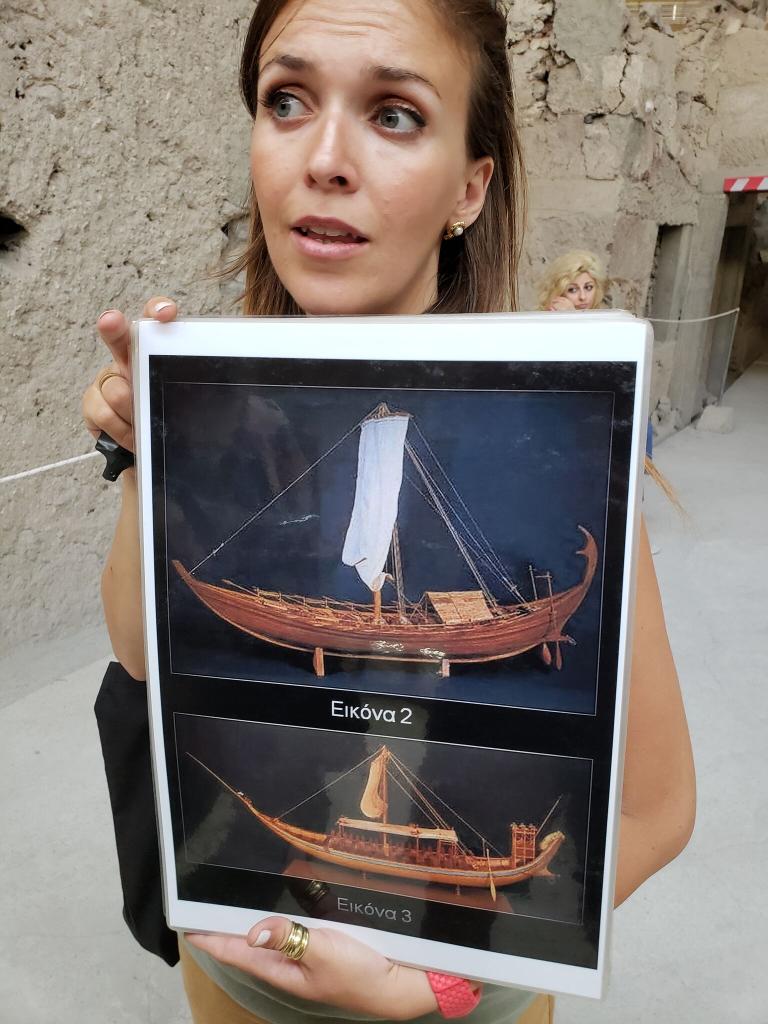
 This civilization was so old it used one of the most ancient forms of writing a language we know of— linear A, which still hasn’t been deciphered (unlike linear B).
This civilization was so old it used one of the most ancient forms of writing a language we know of— linear A, which still hasn’t been deciphered (unlike linear B). 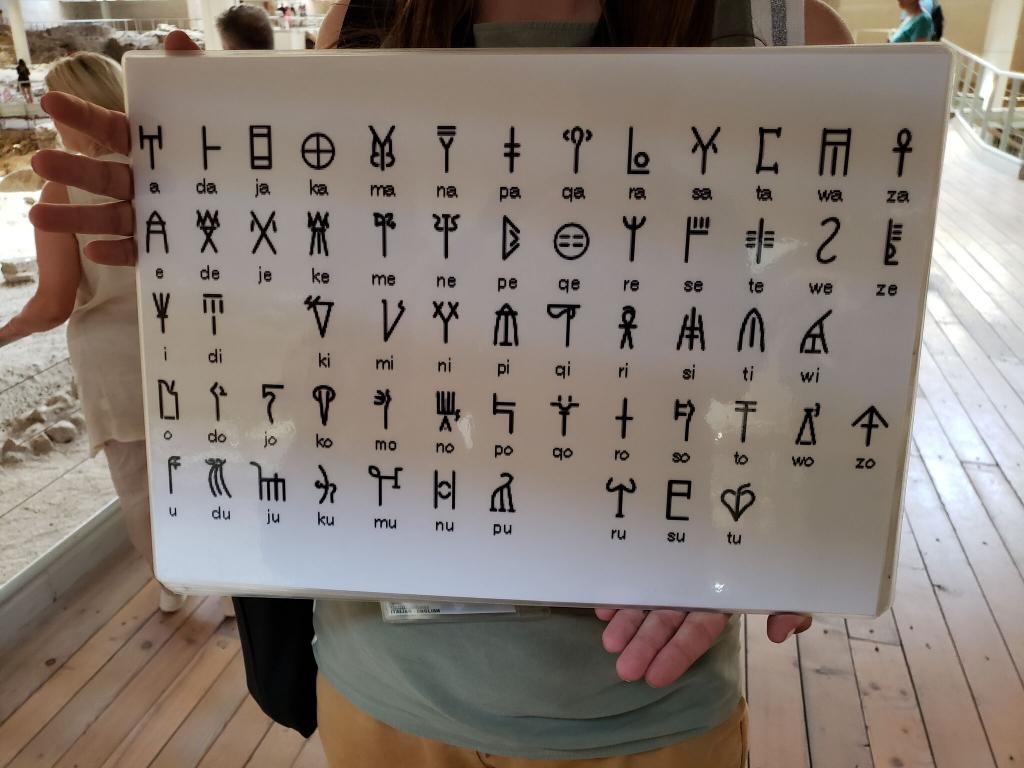
This seems to be the predecessor to the original classical Greek of Homer and others. If you know anything about this site, you probably have seen the famous wall fresco of the fisher boy which was in the West house at Akrotiri, and now is well preserved in the Thera museum on Santorini….

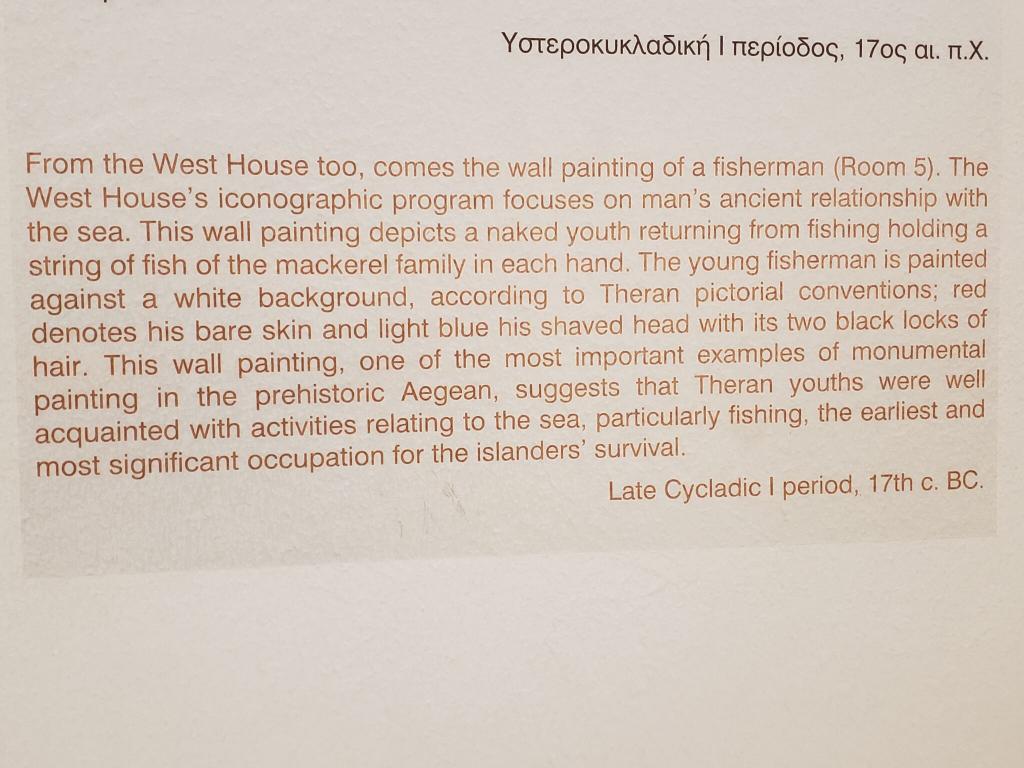
This offshoot of the Minoan civilization was highly advanced in various ways and there are at least three layers of civilization, one on top of another. The first picture below gives you a sense of the size of the site, and the second of its depth….
Ancient cities like this one, tended to build on the ruins of the previous iteration of the city. In this case, people were undeterred by volcanic destruction. They just cleared off the rubble and kept building. At Megiddo, for example, there are 22 or so layers of civilizations. Water and wine had to be kept in amphorae or pithoi jars as there was no natural source of fresh water.


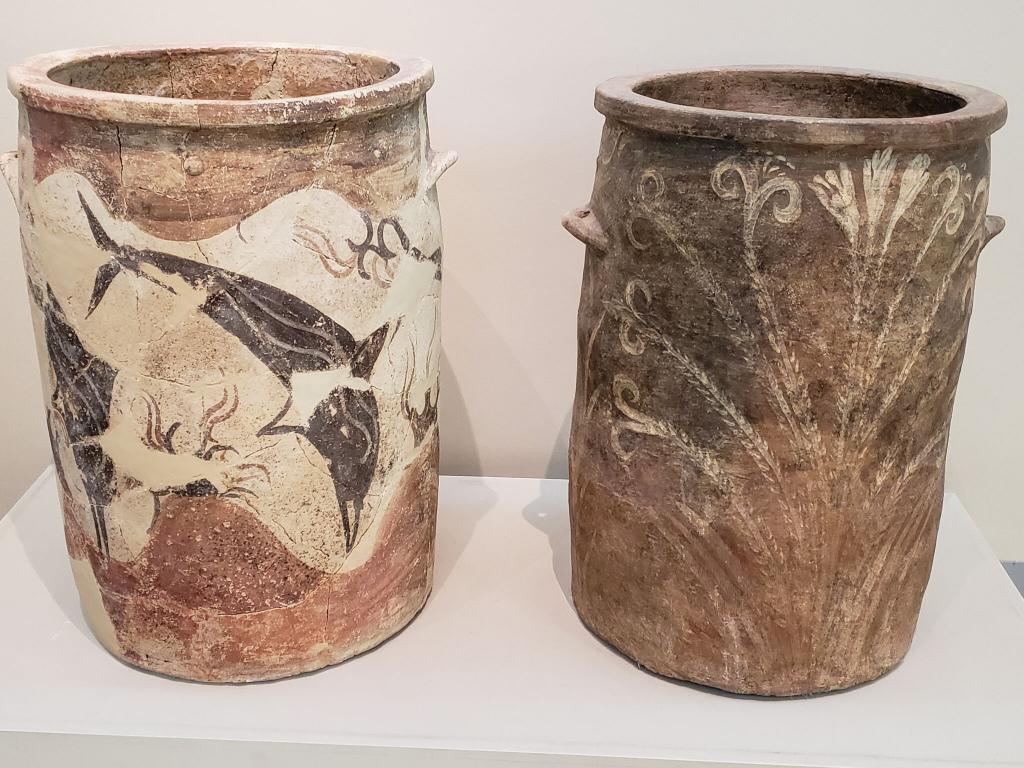
Human beings can’t live more than two days without some kind of potable liquid. What little rain that came had to be preserved at all costs, so there was guttering on the buildings and the runoff was end up in a jar….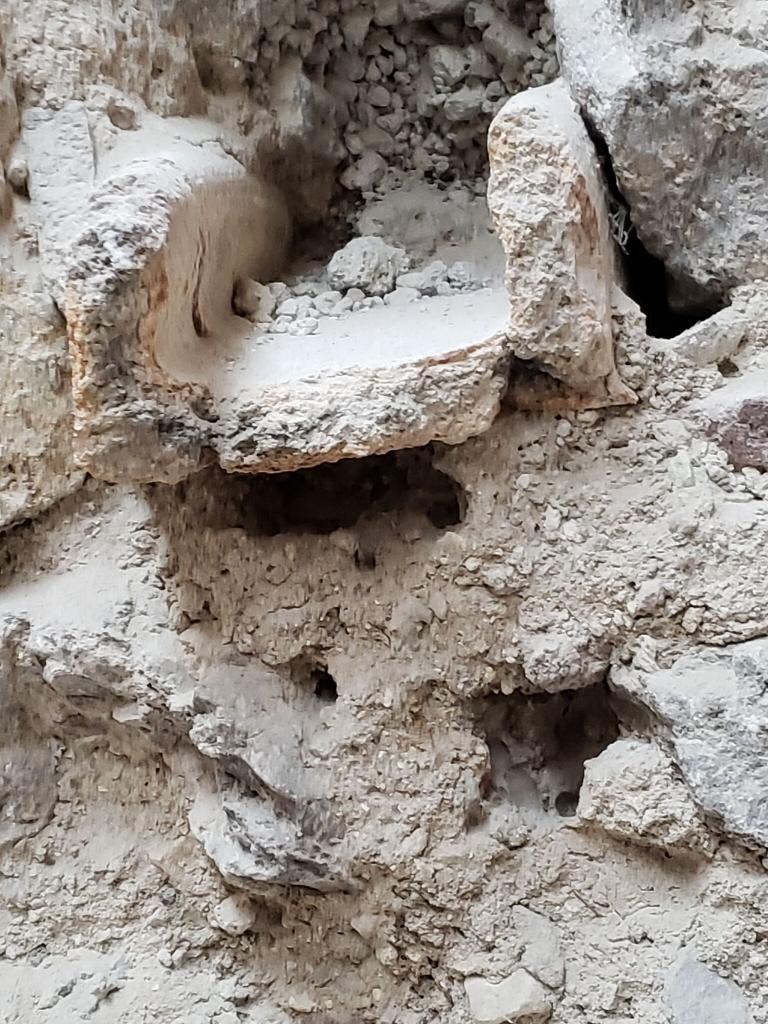
The houses reflect some remarkably high artistic skills…. Not to mention advanced skills in melding stone and wooden structures so you could have doors and windows that would open and close….
Not to mention advanced skills in melding stone and wooden structures so you could have doors and windows that would open and close….



